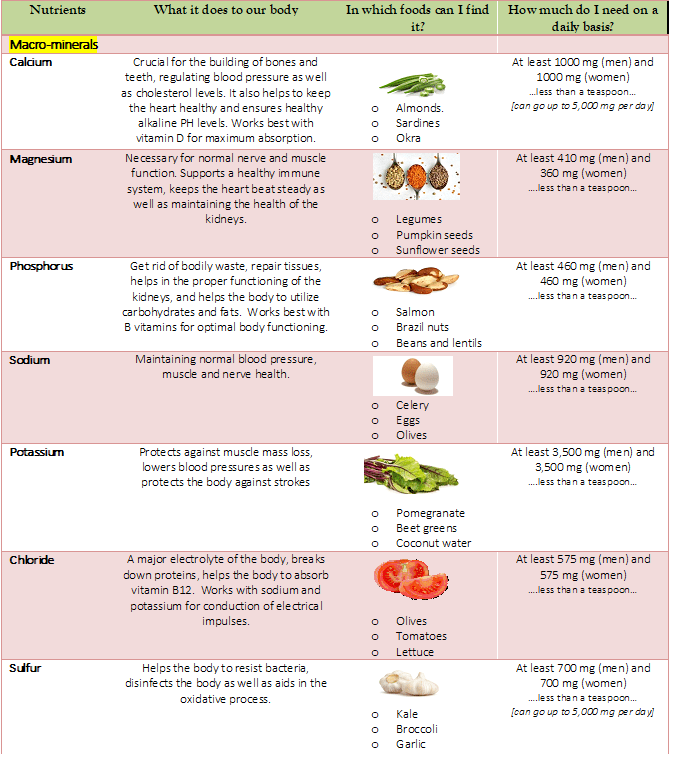

RDA:- The RDA for magnesium increases as we get older. Magnesium has also been linked with protection from certain diseases including diabetes and heart disease. It also helps the muscles and nerves relax, promotes good blood circulation and supports healthy bone growth. It assists in the metabolism of all the macronutrients and some of the micronutrients. Around 60% is stored in the bones and teeth with the other 40% stored in the muscles and soft tissues.įunctions:- Magnesium is responsible for over 300 biomechanical reactions in the body. Storage:- Magnesium represents approximately 0.05% of an average adult’s bodyweight. Sir Humphry Davy made the final breakthrough and isolated magnesium in 1808. Following this discovery, Joseph Black recognised that ‘Epsom Salts’ contained the element magnesium in 1755. If you do become deficient it can lead to muscle spasms and weakness.ĭiscovery:- Henry Wicker is credited with the initial discovery of magnesium in the form of ‘Epsom Salts’ in 1618. However, some people have experienced breathing difficulties, fluid retention and high blood pressure when eating extremely high levels of this nutrient.ĭeficiency Symptoms:- Chloride deficiency can be caused by poor dietary choices, certain medications, diarrhea, vomiting and surgical procedures.

Overdose Symptoms:- Presently there is no upper limit on chloride consumption. Very young children need 180mg per day whilst fully grown adults require 750mg per day.įood Sources:- Chloride can be found in a variety of foods which include: RDA:- Our need for chloride increases as we age. On top of this chloride plays a key role in digestion and metabolism, helps remove waste carbon dioxide from the body and maintains a proper fluid balance inside and outside the cells. It assists in the production of glandular hormones, helps you absorb potassium and helps maintain proper blood pressure and volume. Storage:- Chloride represents around 0.15% of an average adult’s bodyweight and is stored in the fluids outside the body’s cells.įunctions:- Chloride has various functions in the body. Overdose Symptoms:- Eating excessive levels of calcium (3000mg per day or more) can lead to a number of negative symptoms including dehydration, diarrhea, lethargy, nausea, stomach pain and vomiting.ĭeficiency Symptoms:- Failing to get the RDA of calcium can cause high blood pressure, muscle cramp and osteoporosis (reduced bone density).ĭiscovery:- Chloride was isolated by Sir Humphry Davy in 1807 after Carl Whilhelm Scheele initially discovered it as the compound dephlogisticated marine acid (a combination of chloride and oxygen). The list below contains five of the top calcium food sources: However, for people aged 51 years and over the RDA is a much higher 1200mg.įood Sources:- Dairy products are a well publicised source of calcium but there are many more.

For very young children aged between 0-6 months the RDA is 210mg. This means that your requirement increases as you age. Recommended Daily Allowance (RDA):- Your body absorbs less calcium as you get older. It is also responsible for controlling blood pressure, muscle contractions and nerve transmissions, helping the blood to clot and supporting proper muscle and nerve functions. The rest is stored in the blood and cellular fluids.įunctions:- The main function of calcium is to support strong bones and teeth. Around 99% is stored in the bones and teeth. Storage:- Calcium represents approximately 1.5% of an average adult’s bodyweight. Macrominerals are generally required in amounts larger than 100mg per day and stored by the body in quantities greater than 5g whereas microminerals are not.īelow I will be discussing each of the seven macrominerals in greater detail:ĭiscovery:- Calcium was discovered by Sir Humphry Davy in 1808. Within the mineral family there is then a further distinction between macrominerals (or main minerals) and microminerals (or trace minerals). Minerals are inorganic compounds (they come from the soil and water) whereas vitamins are organic compounds (they come from plants and animals). Within the micronutrient family there is also a distinction between minerals and vitamins. Micronutrients are distinguished from macronutrients because they contain no calories and are required in much smaller amounts. They are part of the micronutrient family (a group of nutrients which includes vitamins and minerals). The macrominerals are the seven main (hence the term ‘macro’) minerals your body needs to function properly.
Today I am going to bring this information together and provide a summary of the seven macrominerals, the ways they benefit your health, the best food sources and the adverse effects of getting too little or too much. In my last few articles I have been discussing each of the macrominerals in detail.


 0 kommentar(er)
0 kommentar(er)
